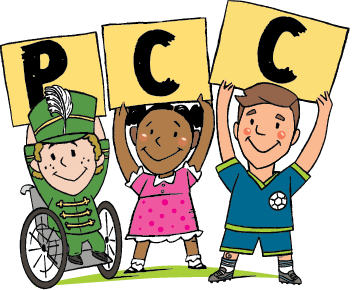Are you starting to see an open bite or overbite form in your child’s mouth? Are they struggling to pronounce consonant sounds like “D” and “T”? What about cracked or bleeding skin around the mouth or hands? Believe it or not, all these issues can have the same root cause: thumb sucking.
Maybe you’ve gotten feedback from your dentist or pediatrician. Perhaps your family or friends have made some off-handed comments that were both unhelpful and uncomfortable. Or maybe you’ve just started to notice it yourself, and you think, “It’s time to stop this before they go to college with their thumb in their mouth!”
Whatever the case, thumb sucking can be a tough practice to break. Unlike a pacifier, you can’t cut the tip, throw it out, or trade it for another toy. Your child’s thumb is attached to their hand, so they must be involved in the process a bit more from the get-go.
Why Kids Suck Their Thumbs
The American Academy of Pediatrics says sucking is a survival instinct for babies. They are born with this intense need to suck, so they can find the breast or bottle shortly after birth.
You may also notice that your child puts their fingers in their mouth to suck pretty much immediately after they realize they have hands. About 90 percent of newborns will show some form of hand sucking just two hours after birth! Sucking on fingers is one of the many ways they learn to self-soothe. This isn’t negative until it begins to affect other areas of development whether physical, emotional, or social.
Consider Your Child’s Age
Before we get into the top tips to stop thumb sucking, let’s consider the ages where the habit is more or less problematic. After all, should you really worry about your teeny tiny babe putting their thumb in their mouth? When does thumb sucking actually affect your child’s health?
When it comes to your infant (less than 12 months), thumb sucking is a soothing tactic. Your child may take some time (probably around 6 months) before they find their thumb and fixate on it.
If your child continues thumb sucking into their toddler years, that’s when you need to keep an eye on the practice and how it begins to impact their development. If you have a 4-year-old still sucking their thumb, this is your sign to implement the techniques listed below. At that point, they should have all those baby teeth and are starting to head into the school years.
Top Tips to Stop Thumb Sucking
- Start talking to your child
Since their thumb is so accessible, thumb sucking isn’t the easiest habit to phase out without your child’s participation. Begin a conversation with your child about their thumb sucking. Ask them (nicely) about the habit. Why do they do it? How does it make them feel? Do they do it without noticing, or are there specific times they like to do it? Is there another soothing technique that they like just as much?
Their answers to these questions can help you get ideas of how you can best address their specific habit and allow them to self-soothe or cope with other objects. During this conversation, you can also explain to them some of the developmental issues that come with thumb sucking. Show them in the mirror what’s happening to their teeth. Remind them of the uncomfortable cracked skin that they’ve had around their mouth. While 4-year-olds aren’t able to reason like adults, you can bring them into the dialogue instead of trying to work around them.
2. Learn about thumb sucking
Read books about thumb sucking or watch a TV show where a character has to break a habit. This can help your child relate their situation to a character and allow them to see that they aren’t alone. Breaking a habit isn’t easy, but it is possible!
Here are some books you may consider reading together:
- Anna and Dedo: A Thumb Ventures Out
- Thumbs Up, Brown Bear
- Thumbs Up for Ted’s Thumbsie
- Dana’s Finger is Set Free
- Isadora! Take That Thumb Out of Your Mouth
3. Apply special nail polish
If your child is having a hard time remembering not to suck their thumb, you might try purchasing a special nail polish with a bitter taste. Examples include the ella+mila Nail Care No More Biting, Thum Thumb Sucking & Nail Biting Liquid, and Mavala Stop Deterrent Nail Polish Treatment.
These nail polishes are intended for nail biters and thumb suckers because it helps remind the brain every time the fingers are brought to the mouth. One taste of the polish and your child will be left with a bitter taste on their tongue, further reinforcing the goal to stop thumb sucking.
4. Understand thumb-sucking patterns
Some children use thumb sucking to self-soothe before bedtime while others may use it as a coping mechanism when they’re anxious, sad, or angry. If your child isn’t able to tell you why they do it (and you don’t know already), spend a couple of days studying your child. Understanding how they are using the habit can allow you to offer other ways for them to soothe or cope without it.
5. Offer rewards and incentives
Consider creating a reward or incentive program for your child. Who isn’t motivated by a prize they really want? For instance, you could start small by creating a sticker chart for 30 days without thumb sucking, and when your child reaches that milestone, they get to go pick out a toy.
If you think 30 days is too big a goal to start, dial it back to a week. Some families prefer to stick with non-monetary prizes (just stickers, for instance) while others know their children are motivated by certain toys or treats. Do whatever works for your family!
6. Buy a finger guard or hand stopper
If your child needs a more physical reminder to stop thumb sucking, you can consider a finger guard or hand stopper.
Finger guards are exactly what they sound like. They are glove-like devices — either plastic or fabric — that prevent children from sucking their thumbs or fingers. A hand stopper is a flexible brace that you attach to your child’s elbow. The goal of this device is to stop it from flexing, so they can’t bring their hand to their mouth at all.
The downside of these options is that they are highly noticeable and can limit motion, play, or feeding. For some families, these won’t work at all. Others use them as a last resort.
7. Have the dentist or doctor talk to them
Have you ever heard that your child is an absolute angel at school, but you’ve never seen them behave that way at home? Well, sometimes kids listen to people other than Mom or Dad best.
If that’s your child, consider taking them to a dentist or doctor to have a chat about your thumb sucking. If you’ve already tried to have a conversation with them, and you’ve had weeks and weeks of frustration, then a professional could be helpful!
8. Be gentle
When attempting to dissuade your child from thumb sucking through any of the above methods, be gentle. You should not yell at them or scare them out of the behavior. Teasing, scolding, and belittling can do more harm than good. Instead, use gentle reminders and reprimand anyone in your household or strangers who interfere with this approach. Being kind and consistent is the best course of action.
Final Thoughts
Do you need a pediatrician on your team as you navigate thumb sucking? Jacksonville Pediatric Care Centers provide care. Dr. Benitez and his team of Jacksonville pediatricians work around the clock to provide exceptional pediatric care.










